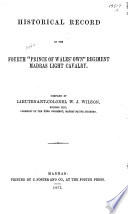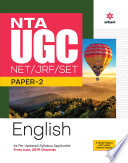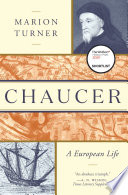Discover our comprehensive guide with our top picks of the best 15th century authors to read the best works that emerged from the 1400s.
The 15th century was a time of change for many civilizations as literature and music began to move toward the Renaissance. Writers discussed ideas of love, justice, war, and freedom, and started to work their way toward a new, lighter period, finally free of the Black Death that plagued the 14th century.
Table of Contents
Open Table of Contents
- Must-Read 15th Century Authors Today
- 1. Thomas Hoccleve, 1368-1426
- 2. Thomas Malory, unknown-1471
- 3. William Caxton, unknown-1492
- 4. John Fortescue, 1394-1479
- 5. Julian of Norwich, 1343-unknown (after 1416)
- 6. Margery Kempe, 1373- date of death unknown
- 7. John Mirk, unknown
- 8. Alain Chartier, 1385-1430
- 9. William Cornysh, 1465-1523
Must-Read 15th Century Authors Today
1. Thomas Hoccleve, 1368-1426
Also known as Occleve, Thomas Hoccleve was an English clerk and poet who became an important hallmark of English literature in the Middle Ages. He’s best known for his homily Regement of Princes. Records do not indicate where Thomas Hoccleve was born, but his family was likely from Hockliffe Village in Bedfordshire.
He became a clerk when he was about 20 years old, a position that required fluency in both Latin and French. His first poem was The Letter to Cupid, written around 1402. He’s also known for his poem*La Male Regie**. After his marriage in 1410, he began to write religious and moral works. In addition to working as an author, clerk, and poet, Hocclevel was also a scribe for John Gower.
“Whoso that frõ the poore mannes cryStoppeth his eares though he loude crye,Shall not be heard; and moreover, rede ye,His days shall increase and multiplyeThat avarice hateth — this is no lie.”
Thomas Hoccleve, Regement of Princes
2. Thomas Malory, unknown-1471
Thomas Malory is best known for Le Morte d’Arthur, which tells the tale of the classic legend of King Arthur. Little is known about Malory’s life. At one point, he referred to himself as a “knight prisoner,” possibly indicating that he was a prisoner of war. Today’s historians believe Malory was likely imprisoned for political and criminal reasons. The author’s fluency in French makes it likely that he came from a wealthy family.
“For I have promised to do the battle to the uttermost, by faith of my body, while me lasteth the life, and therefore I had liefer to die with honour than to live with shame ; and if it were possible for me to die an hundred times, I had liefer to die oft than yield me to thee; for though I lack weapon, I shall lack no worship, and if thou slay me weaponless that shall be thy shame.”
Thomas Malory, Le Morte d’Arthur
3. William Caxton, unknown-1492
William Caxton via Wikipedia, Public Domain
William Caxton was an author, merchant, and diplomat. It’s likely that he was the first to introduce a printing press to the world of English literature, and he was the first person to sell printed books in the country. Much of Caxton’s early life history is unknown. His first printed work was The Recuyell of the Historyes of Troye. The author was known for often speaking on the importance of freedom in society. Caxton eventually became successful in business and was named the governor of the Company of Merchant Adventurers of London. In 1473, he printed his first book in English. While his exact date of death is unknown, he likely died near the end of the century.
“He that hath liberty ought to kepe it wel, for nothyng is better than liberty.”
William Caxton
4. John Fortescue, 1394-1479
John Fortescue via Wikipedia, Public Domain
Chief Justice of the King’s Bench and author John Fortescue was known for his treatise on English law entitled De Laudibus Legum Angliae. Fortescue was elected a member of Parliament in several areas, including Totnes, Wiltshire, Plympton Erle, and Tavistock. The author was forced to flee to Scotland after being accused of treason but returned to England years later. While the exact date of his death is unknown, he likely passed away in the autumn or winter of 1479.
“One would much rather that twenty guilty persons should escape the punishment of death, than that one innocent person should be condemned and suffer capitally.”
John Fortescue, De laudibus legume Angliae
5. Julian of Norwich, 1343-unknown (after 1416)
Julian of Norwich via Wikipedia, Public Domain
Also known as Mother Julian, Dame Julian, the Lady Julian, and Juliana of Norwich, Julian of Norwich is known as a mystic and author who wrote Revelations of Divine Love. Many believe this work is the oldest surviving piece of English literature written by a woman. After surviving the plague, Julian was so ill that she thought she was dying, at which point she experienced visions of Christ.
Following her recovery, Julian wrote a short account explaining what she experienced. Years later, she wrote The Long Text, detailing her visions further. Julian explored many complicated religious themes in her works, including the existence of evil and whether humans have free will.
Many Christians today believe that Julian was a key theologian in the development of modern-day Christianity. Following sharing her story, she spent the remainder of her life at St. Julian’s Church, where she was known as a recluse. Today, Julian of Norwich is still celebrated in the United Kingdom. May 13th marks the unofficial feast day when Christians in England and beyond share a meal in honor of the mystic.
“From the time these things were first revealed I had often wanted to know what was our Lord’s meaning. It was more than fifteen years after that I was answered in my spirit’s understanding. “You would know our Lord’s meaning in this thing? Know it well. Love was His meaning. Who showed it to you? Love. What did He show you? Love. Why did He show it? For love. Hold on to this and you will know and understand love more and more. But you will not know or learn anything else – ever.”
Julian of Norwich, Revelations of Divine Love
6. Margery Kempe, 1373- date of death unknown
A mystic following in the footsteps of Julian of Norwich, Margery Kempe is best known for her book The Book of Margery Kempe, which many academics consider to be the first autobiographical work written in English. Kempe was born to a wealthy family in England, but there are no records of her attaining formal education.
It’s possible that Kempe could not read, and she dictated her experiences with religious visions to a scribe. Like Julian, Kempe went through a period of serious illness (which some today believe to be postpartum psychosis) in which she experienced visions of demons, God, and Jesus Christ. She was known for constantly crying as she begged Christ to forgive her for her sins.
Kempe and Julian of Norwich met in approximately 1413, with a visit spanning several days. It’s recorded that Kempe desperately wanted Julian to validate her conversations with God. Julian indeed vetted Kempe’s experience and cautioned her only to share her story when it would help to bring others closer to God. Kempe’s works were missing for centuries but resurfaced in 1934 and have since been published in many languages.
“She greeted the Vicar, asking him if she could—in the afternoon, when he had eaten—speak with him for an hour or two of the love of God. He, lifting up his hands and blessing himself, said, “Bless us! How could a woman occupy one or two hours with the love of our Lord? I shan’t eat a thing till I find out what you can say of our Lord God in the space of an hour.”
Margery Kemp, The Book of Margery Kempe
7. John Mirk, unknown
John Mirk via Wikipedia, Public Domain
John Mirk is known for his works designed to help religious officials lead ceremonies. His most famous work was Festial, or Book of Festivals. Mirk’s guide to religious ceremonies was likely the most printed book of the time. Little is known about Mirk’s life. He likely became active in the literary world of England around 1380.
Historians believe that he spent time in Northern England, as many of Mirk’s works seem to be influenced by Norse culture. Living through the Black Death was heavily influential in Mirk’s works. Some critics state that Mirk’s writings are simplistic and seem geared toward entertaining a crowd more than teaching priests how to perform religious ceremonies.
“God seyth hym self, as wryten we fynde,That whenne þe blynde ledeth þe blynde,In to þe dyche þey fallen boo,For þey ne sen whare by to go.So faren prestes now by dawe;They beth blynde in goddes lawe,That whenne þey scholde þe pepul redeIn to synne þey do hem lede.”
John Mirk, Instructions for Parish Priests, Festial
8. Alain Chartier, 1385-1430
Alain Chartier via Wikipedia, Public Domain
French political writer and poet Alain Chartier made a mark on literature in the Late Middle Ages. He was born in Bayeux to a wealthy family. Chartier and his brother studied at the University of Paris. After completing his studies, Chartier worked for Duke Louis and Yolade of Anjou.
His aristocratic upbringing influenced his literature, including his poems Debate of the Two Lovers and The Lives of Four Girls. Chartier wrote in both French and Latin. While his works have made him an infamous name in literature, he’s also well known in United Kingdom history following a kiss from Margaret of Scotland, who stated she wanted to kiss “the invaluable mouth from which issued and which left so many witty remarks and virtuous words.”
9. William Cornysh, 1465-1523
William Cornysh the Younger was a famous British poet, actor, and composer. In one of the author’s poems, he claims that he was falsely accused of a crime, but he does not disclose the crime. It’s possible that Cornysh was the composer of the Eton Choirbook, but it’s also possible that his father was behind the well-known musical work.
Cornysh worked as a Master of the Children of the Chapel Royal, in charge of royal entertainment and staging diplomatic events.
“The knight knocked at the castle gate;The lady marvelled who was thereat.To call the porter he would not blin;The lady said he should not come in.The portress was a lady bright;Strangeness that lady hight.”
William Cornysh, The Knight and the Lady





